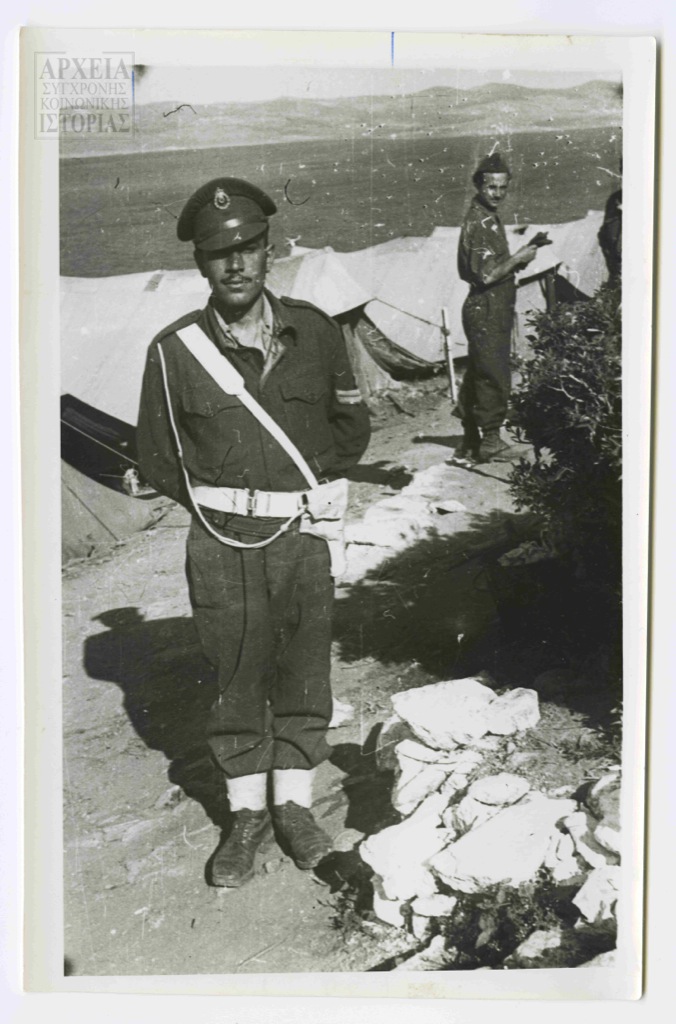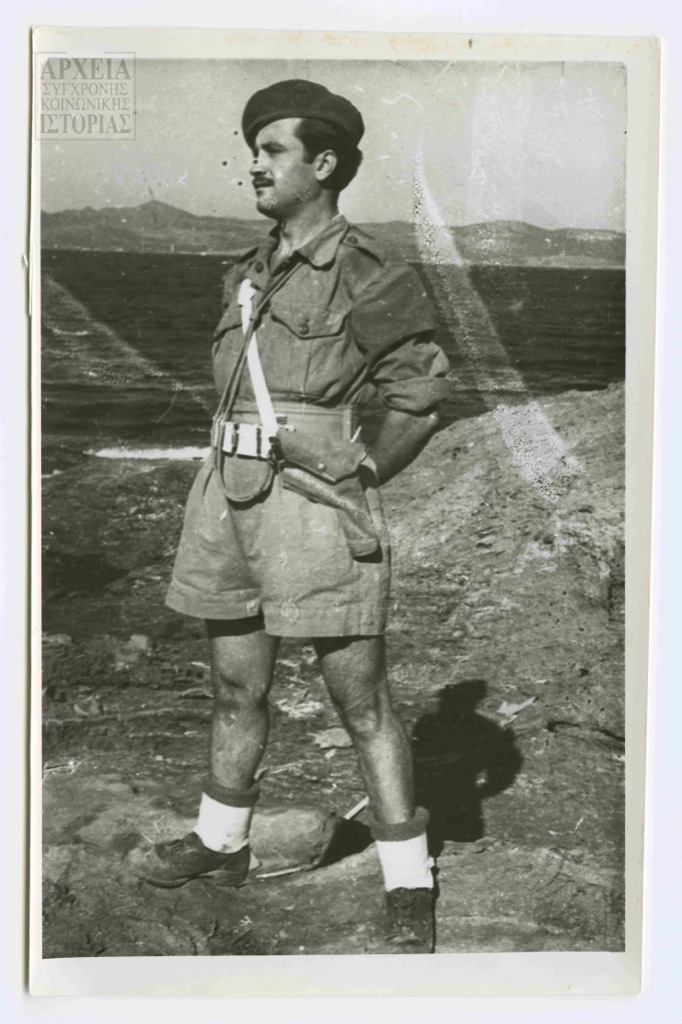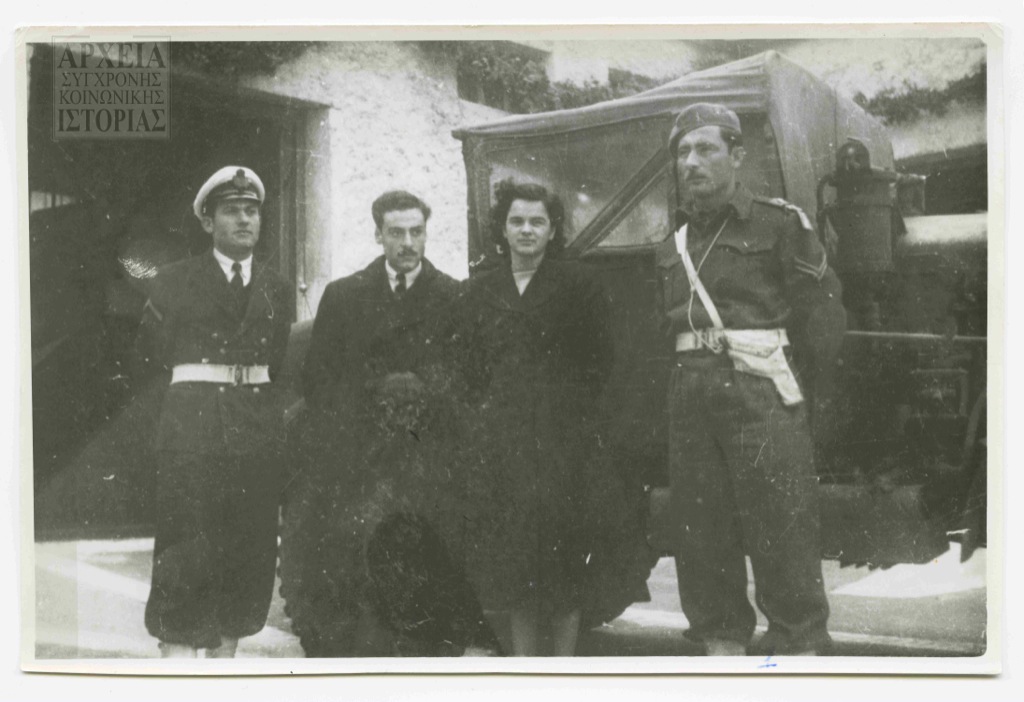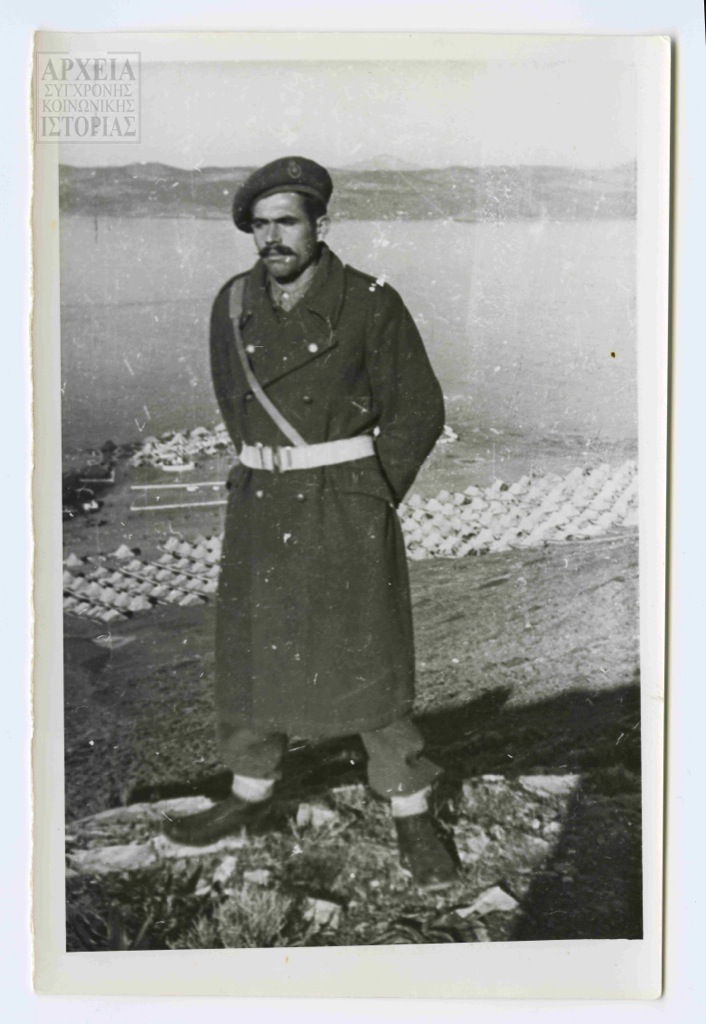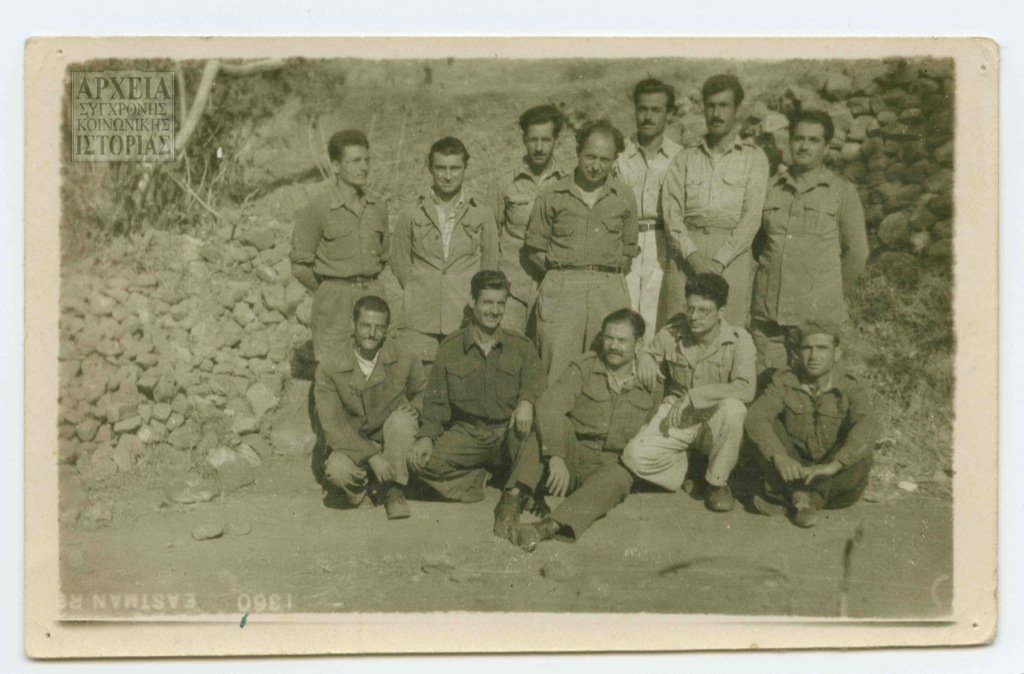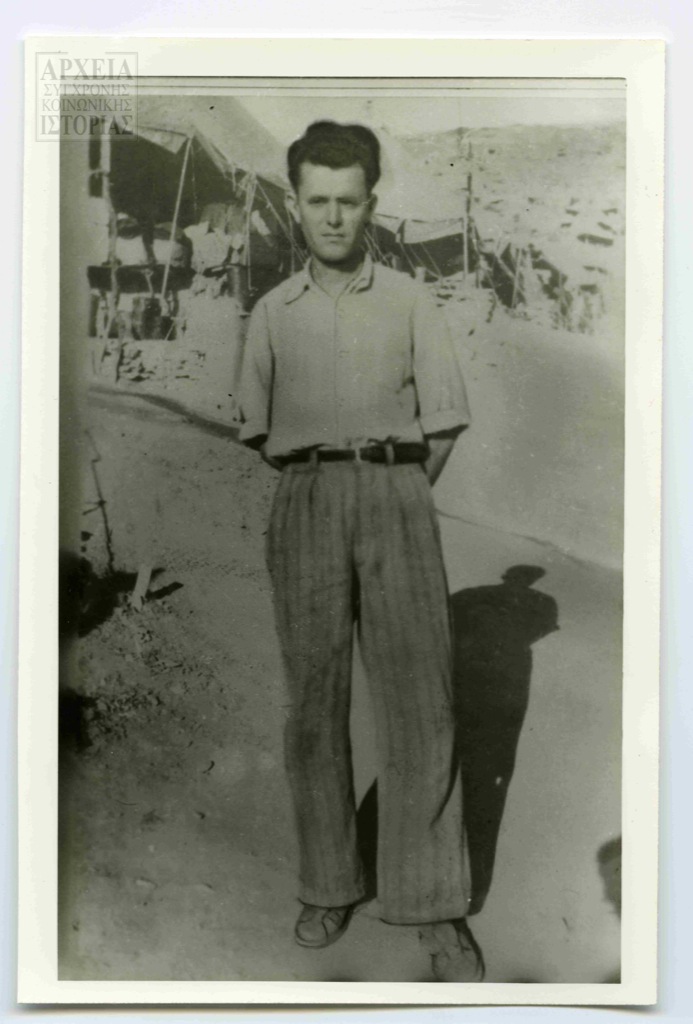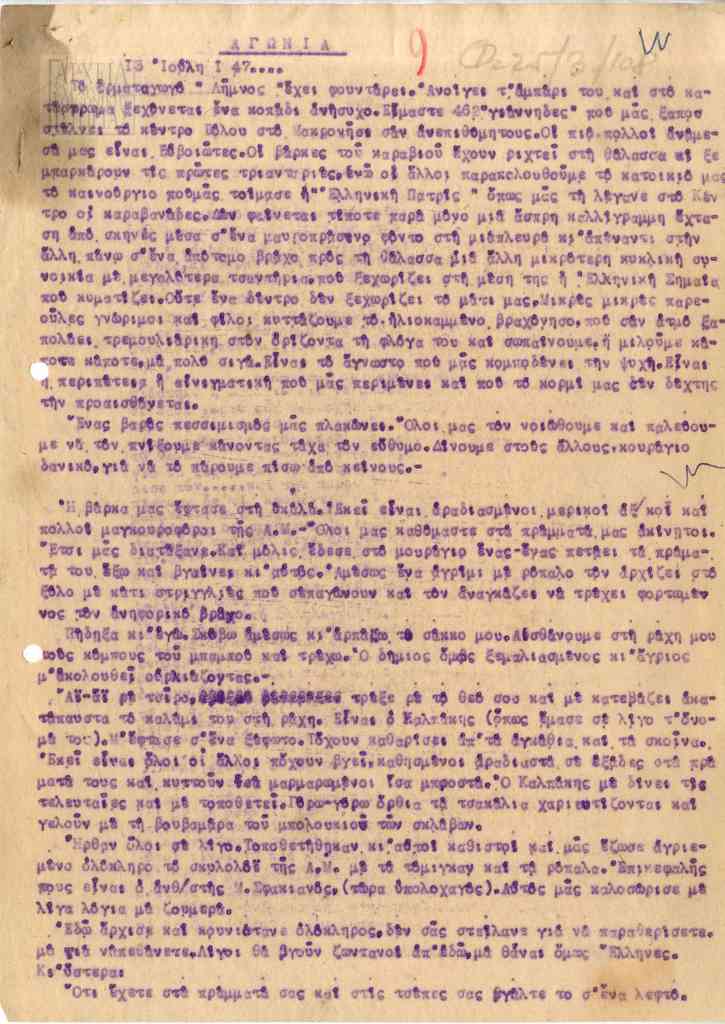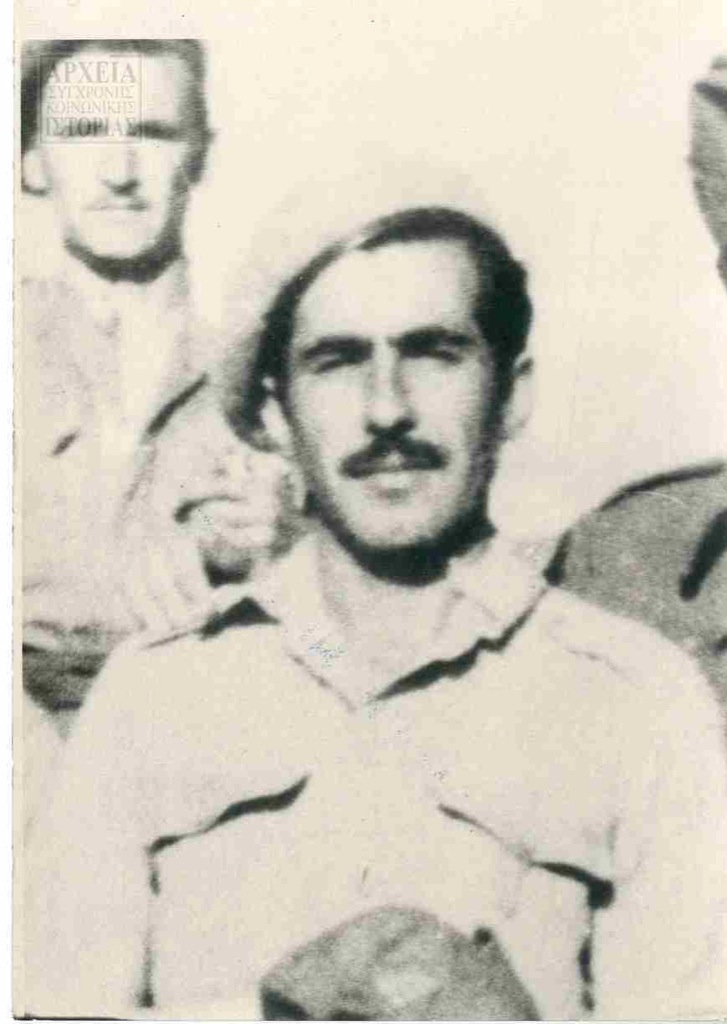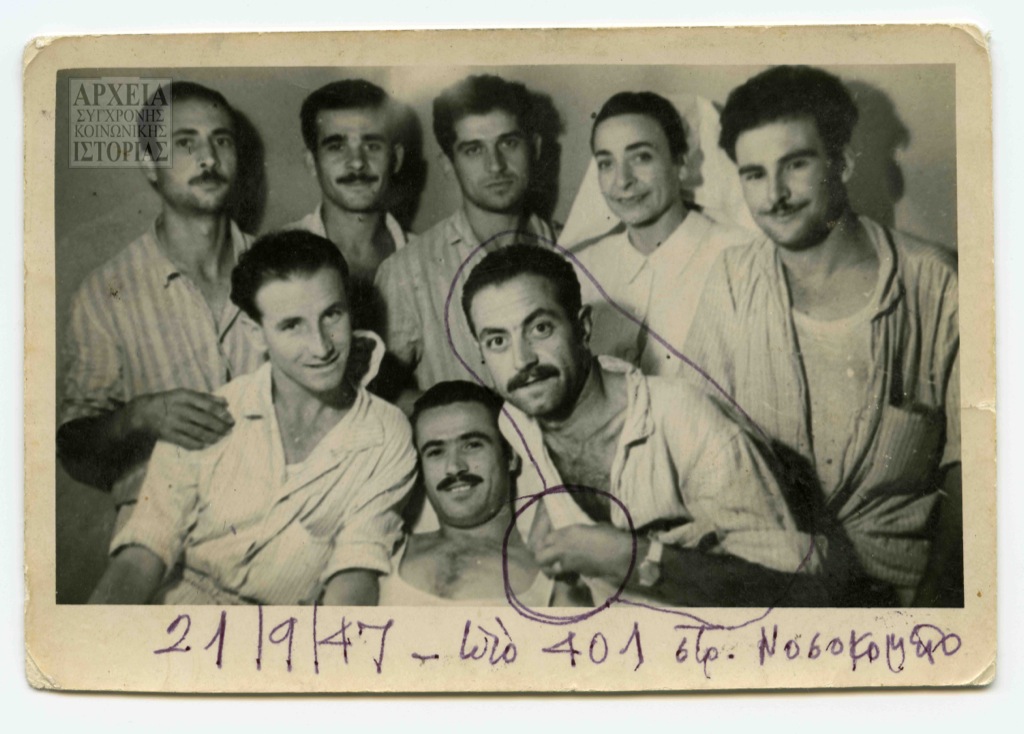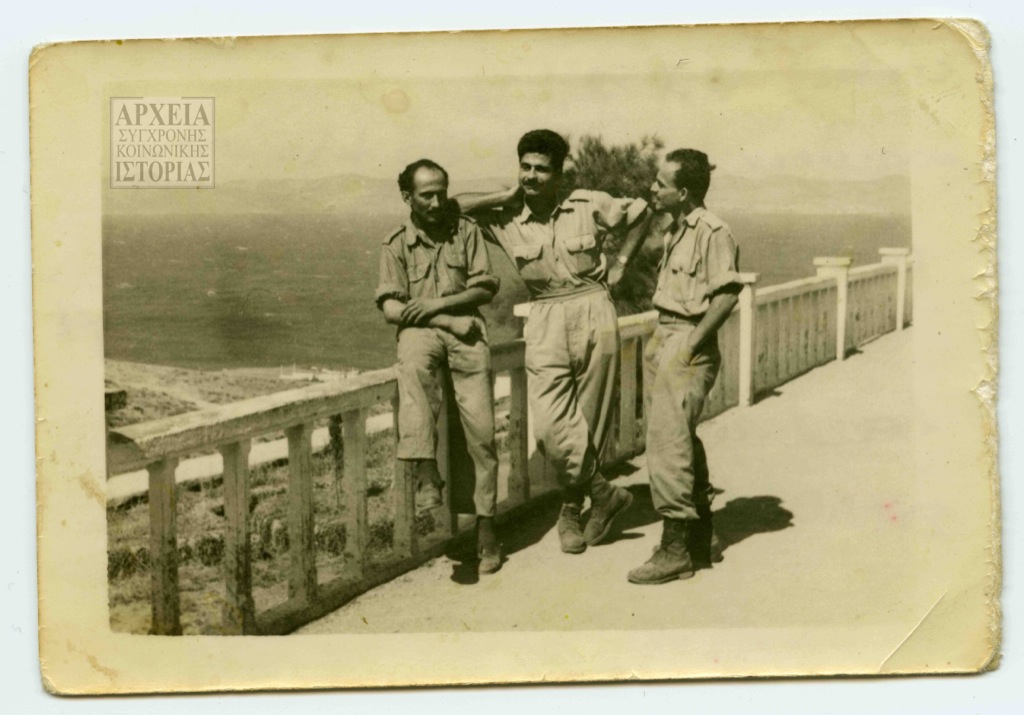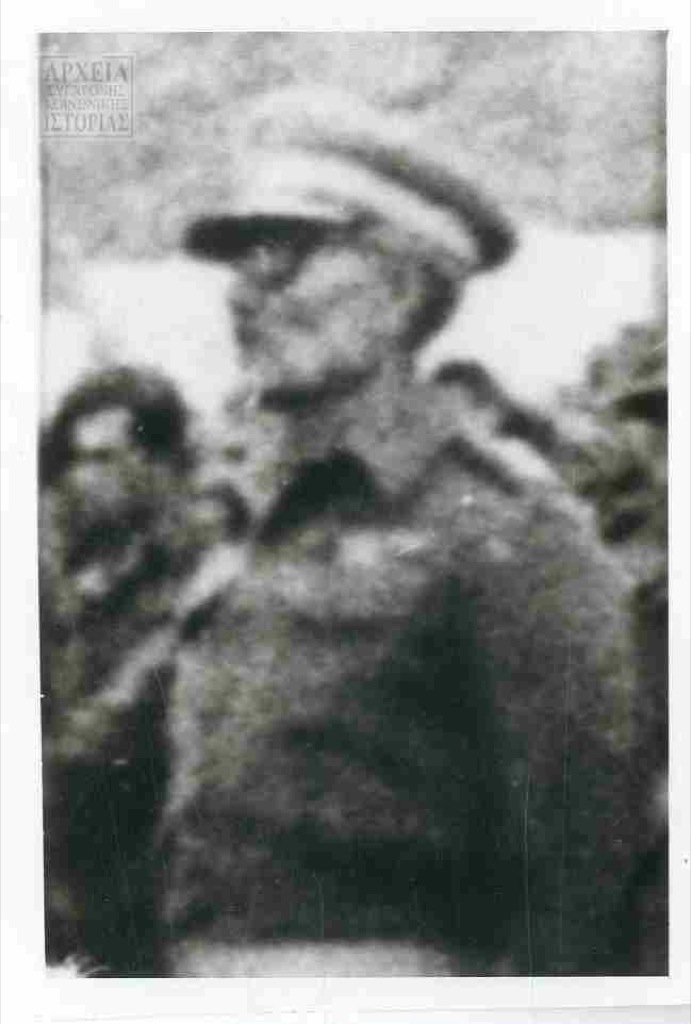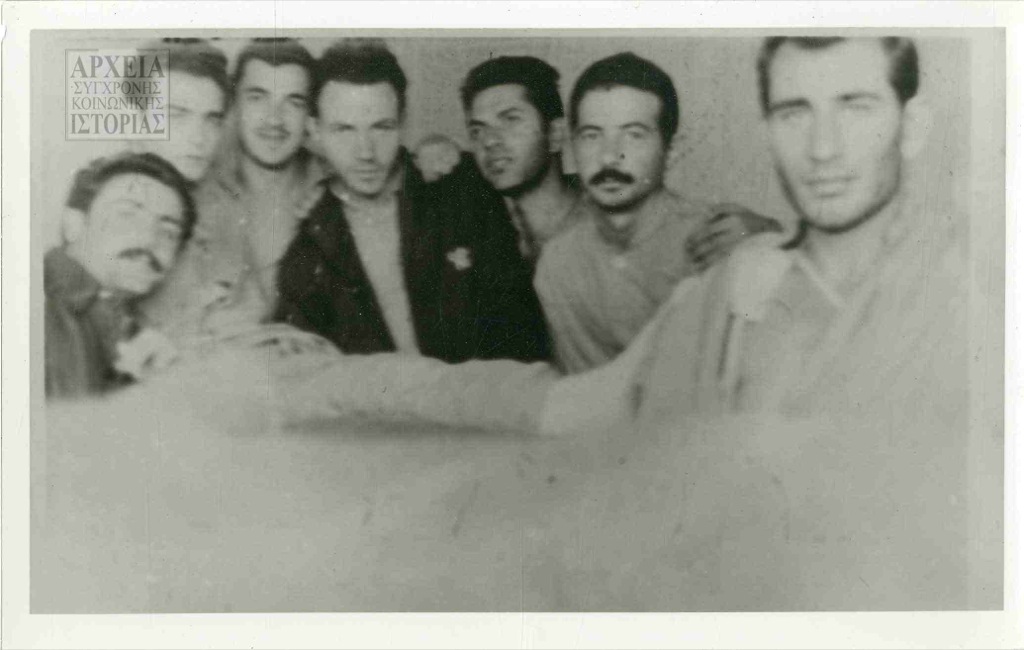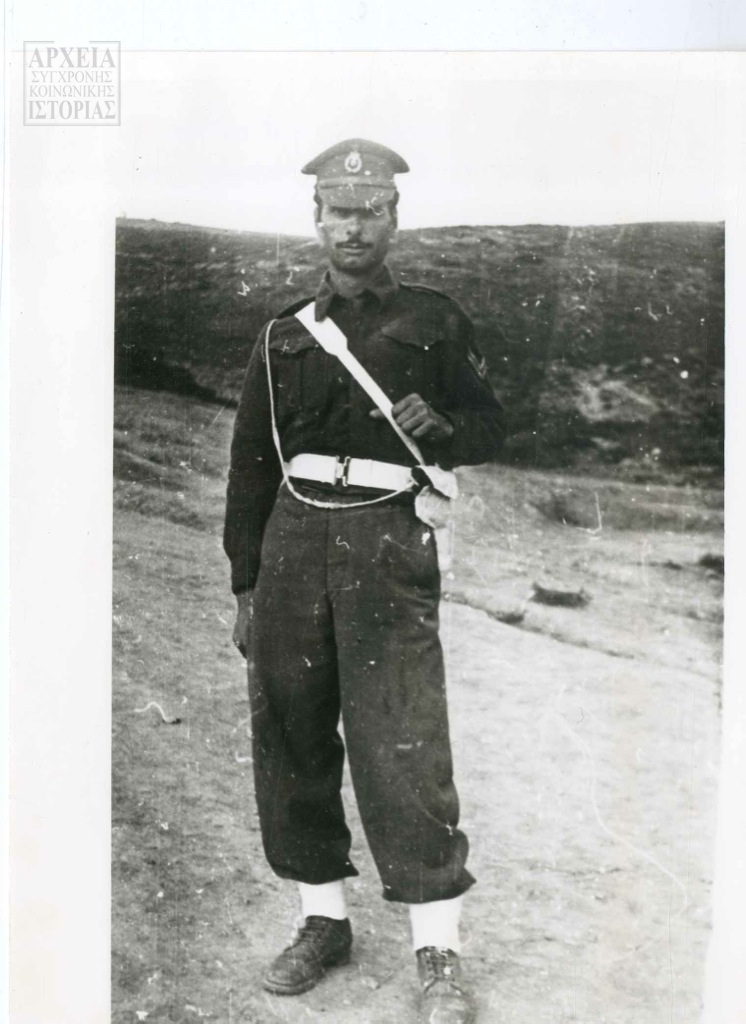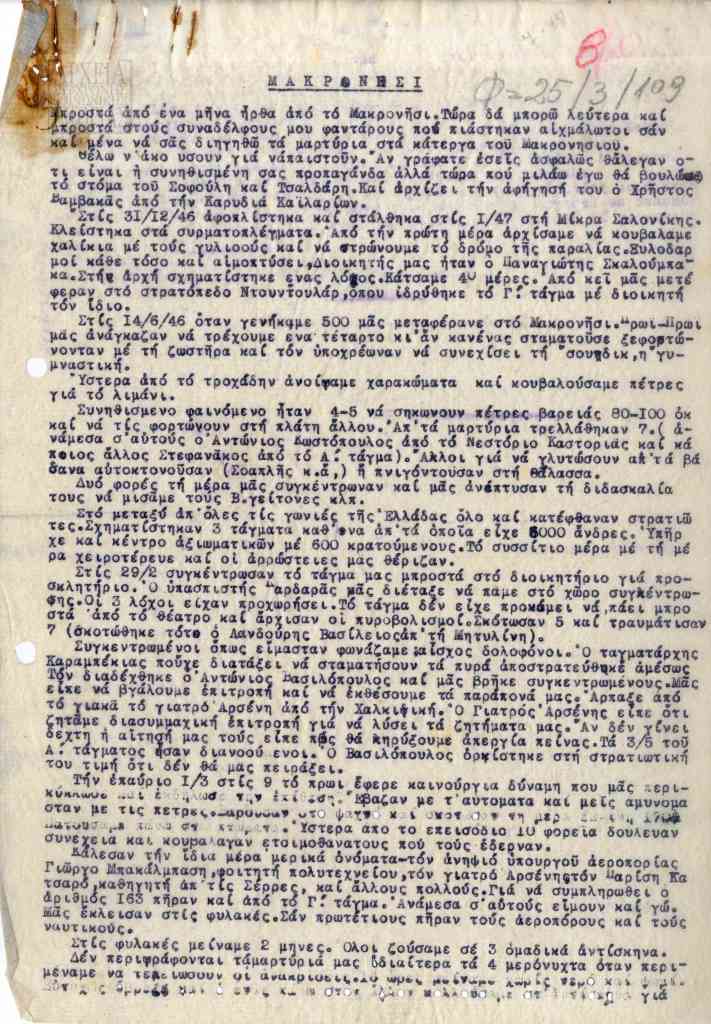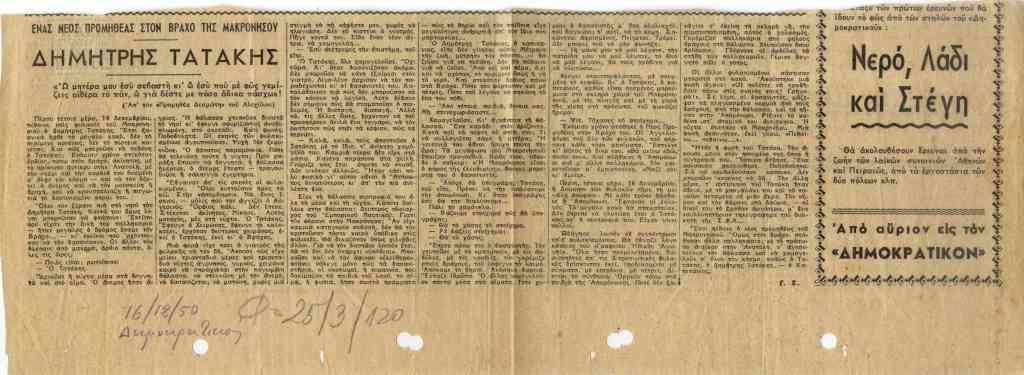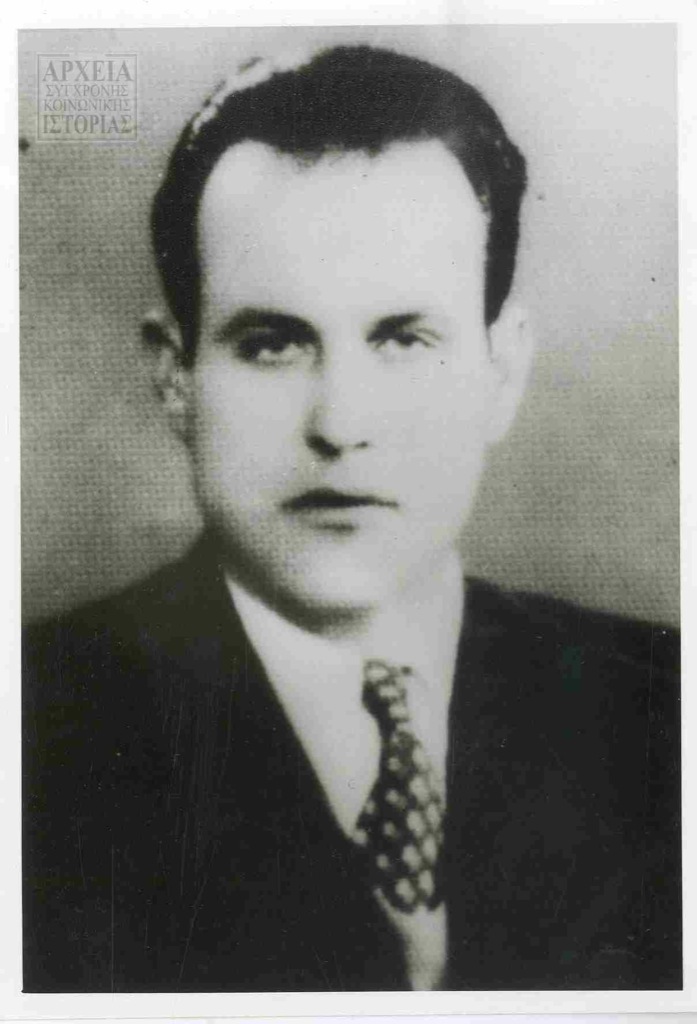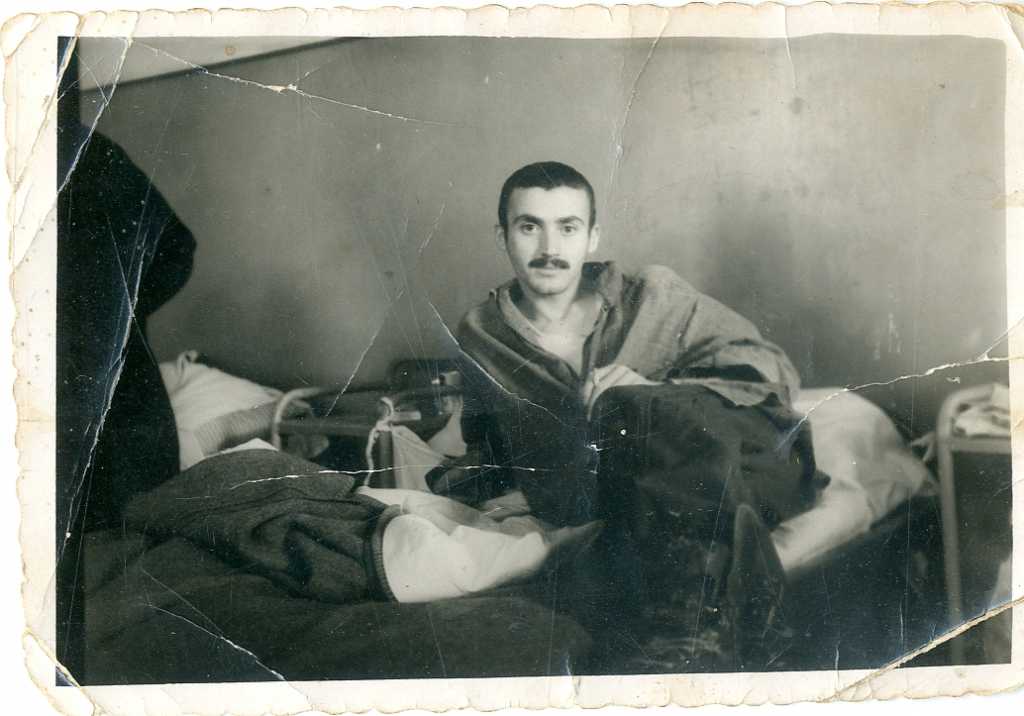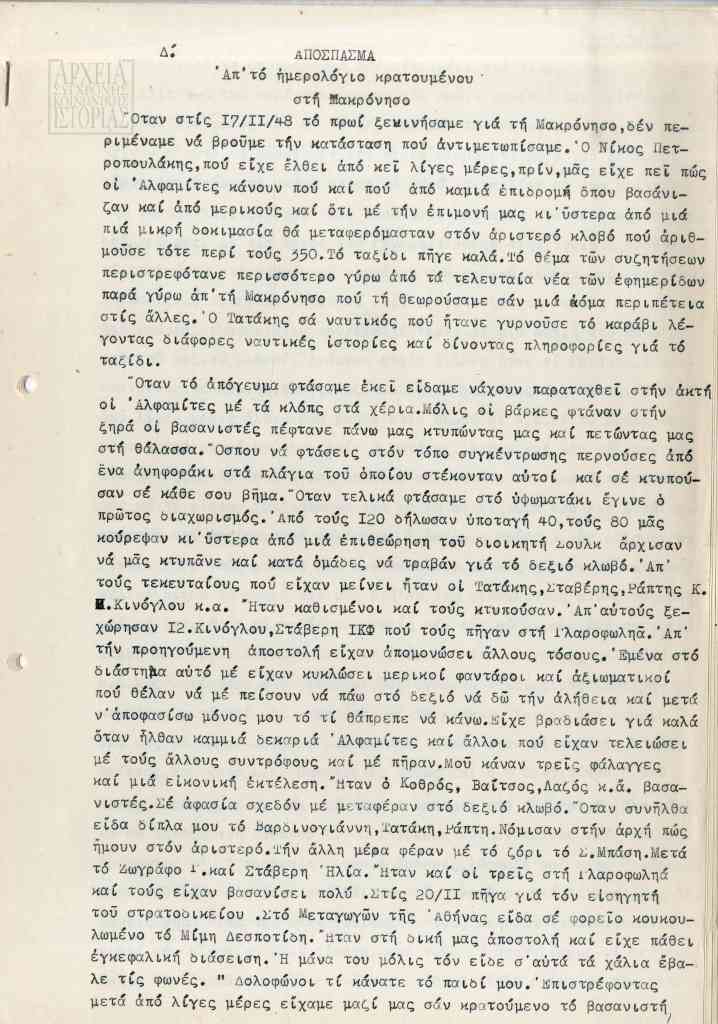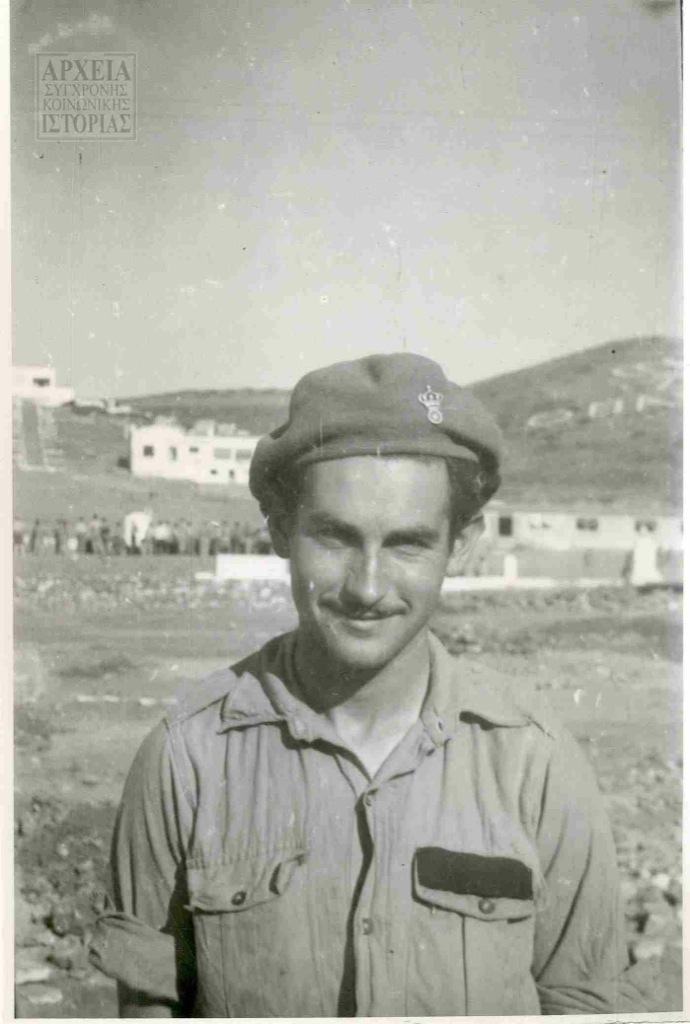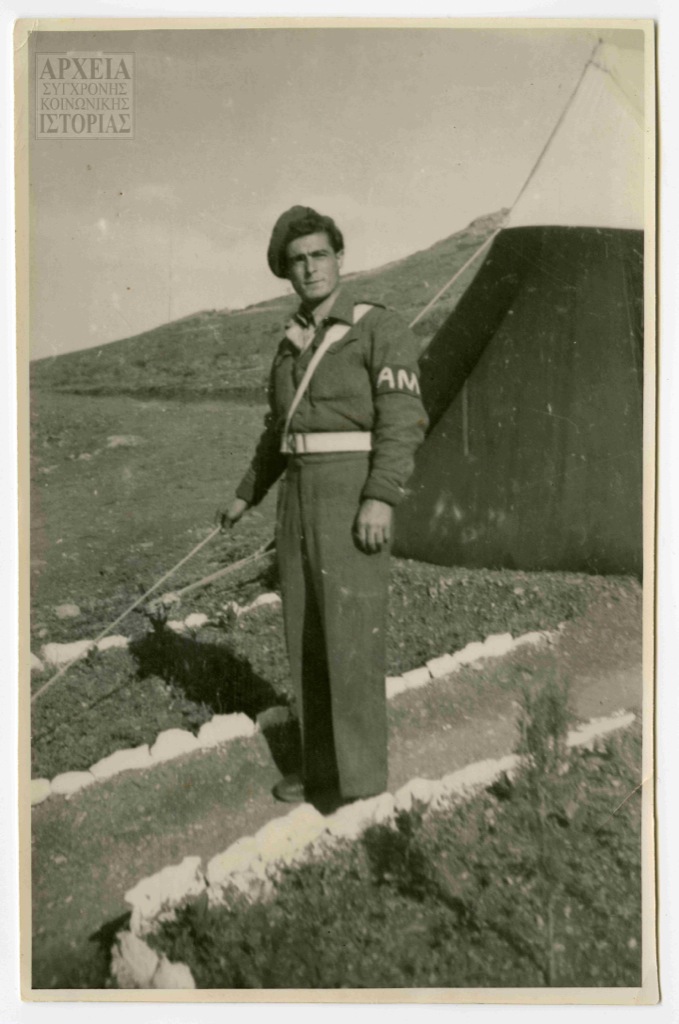TORTURES
From the outset, the military camps on Makronissos became identified with the use of physical and psychological violence against detainees. Torture, in tandem with propaganda, was a vital element in the “rehabilitation”“Rehabilitation”The term used to describe Makronissos activities targeting troops and civilians. Essentially, the term bore no relation to reality as there was no “national” or “moral rehabilitation” of detainees on Makronissos. Rather, terror was used with the aim of altering detainees’ political ideas. process of detainees. The torture aimed to “break” the spirit of the imprisoned soldiers and civilians so that they would sign a repentance declarationDeclaration of repentanceTangible proof of a signatory’s condemnation of the Communist Party of Greece (KKE), National Liberation Front (EAM), Greek People’s Liberation Army (ELAS) or United Panhellenic Youth Organisation (EPON) and the signatory’s activity within those organisations. Essentially, the declaration marked the political annulment and elimination of the signatory as, once signed, it was publicised in the signatory’s home community and village, including in local media. The declaration of repentance was a set tactic of Greek authorities to invalidate the left’s moral foundations. Up until 1974, the KKE did not admit anyone to its ranks who had signed a repentance declaration. (a statement in which they disavowed their political ideas and embraced the ideas of ethnikofrosyni, or national conviction), so that the “rehabilitated”“Reformed” / “Rehabilitated”Chosen for its medical implications, this term implied that the rehabilitated had returned to “national reality” upon signing the declaration of repentance. themselves would become agents for disciplining and punishing their fellow detainees. Ο αλφαμίτης Εμμ. ΧούλιαςThe torturers were soldiers serving in various administrative posts at the camps – for instance, the Military PoliceMilitary Police of the Battalion (alfamites, from its Greek abbreviation)Special unit charged with the military’s internal security. On Makronissos, this corps engaged in extensive torture and continuous use of violence. (AM) and the A2 Bureau – but also included “repenters”. Some of the torture took place in front of other soldiers or political exiles so that the sight of these relentless beatings would terrorise them into signing a declaration of repentance. The torturers used billy clubs, crowbars, whips and steel wire to beat the prisoners, dragged them along the ground, and kicked them in the torso, head and legs until they tired or the detainees fell unconscious.Physical torture took many forms, depending on the torturer’s temperament and the prisoner’s endurance. The most common torture methods were: the falanga (continuous strikes with a crowbar on the soles of the feet), the aeroplanaki or “little airplane” (being forced to stand on one leg with arms extended outwards), the pelargos or “stork” (being forced to stand on one leg for an extended period of time), throwing prisoners fully dressed off the rocky shore into the sea and preventing them getting out, and the strappado, hanging prisoners from posts with their hands tied behind their backs and their toes barely skimming the ground.Torture was incorporated into daily life at the military camps and every activity was accompanied by the beating and humiliation of prisoners. The chores and hard labour required for the construction of the military camp facilities were accompanied by beatings, while detainees were often assigned make-work tasks, like moving rocks from one part of the camp to another, aimed at their physical exhaustion and humiliation. Ο διοικητής Γ’ Τάγματος Παναγιώτης ΣκαλούμπακαςThe detainee-soldiers’ “rehabilitation” begun in the Third BattalionThird Sappers Battalion (Third Special Privates Battalion, C ETO)Military unit created in the Third Army Corps after a decision was taken not to remove citizens with “suspect political beliefs” from the army’s ranks but instead to assign them to units comprised of “undesirables”. Under the command of Captain Panagiotis Skaloumbakas, it was the harshest and most brutal unit at Makronissos. Because such a large number of soldiers serving in the unit signed repentance declarations, it was dubbed the “blue battalion” and “the pool of Siloam”. Subsequent to its stationing at Makronissos, it was renamed the Third Special Privates Battalion (C ETO).. Under the command of the notorious Captain Panagiotis SkaloumbakasSkaloumbakas PanagiotisCommander of the Third Battalion from its formation and considered the harshest unit commander at Makronissos. This led to his selective transfer from the island before the end of the Greek Civil War in an attempt to blunt his negative reputation., a regime of continuous physical and psychological violence was established. Labour lasting from morning to afternoon, scant food and water, pillorying of anyone who did not sign declarations of repentance, frequent tent raids to keep the detained soldiers sleepless, beatings, sea dunkings, and falanga. Those who did not sign repentance declarations were summoned at night to the battalion’s Bureau of Moral EducationBureau of Moral EducationSpecial section within the Makronissos battalions that was response for the “national rehabilitation” of soldiers. Through a combination of moral pressure, blackmail and threats, it created the requisite climate of fear and uncertainty to complement the violence and torture, leading troops to sign declarations of repentance., where they were subjected to lengthy interrogations and beatings. Those who did sign declarations had to prove their change of heart to the command. They made speeches to the other soldiers about the evils of communism and about the contribution of Makronissos as well as harassed and derided the “unrepentant”. Ultimately many became torturers themselves. The rule of violence, terror and propaganda was so excruciating that roughly six months later, few of the 5,000 troops had not signed a repentance declaration.Political exiles were treated just as brutally. Upon disembarking at Makronissos, they were invited by the battalion commander to sign a repentance declaration. When the deadline for signing passed, they were savagely assaulted by baton-wielding soldiers. Faced with this orgy of violence, most of the terrified political exiles agreed to sign; those who did not were isolated from the others and taken elsewhere in the military camp and subjected to more beatings and torture. Sometimes the new arrivals were taken to tents with political exiles who had already been subjected to torture so the new ones could see what lay in store for them and thus were terrorised into signing.As a result of the torture, constant beatings and unbearable psychological pressure, many detainees ended up at the Makronissos hospital with bruises, fractures or concussions, while others showed signs of mental illness. It was not rare for prisoners to attempt suicide.
Related archives

